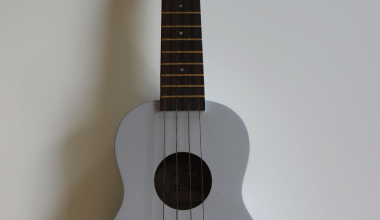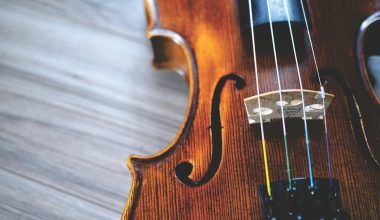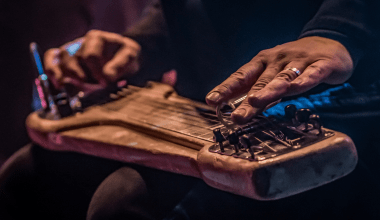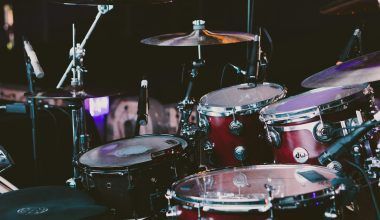What Are Polar Patterns?
Imagine you’re talking into a microphone, and it hears you clearly but ignores the noisy fan behind you. Or you’re in a big room, but the mic focuses only on your voice and not on the echoing sound of your footsteps. How does it do that? The answer lies in polar patterns.
Polar patterns are like the mic’s “ears.” They decide which sounds the microphone listens to and which ones it ignores. This is super important when recording music, podcasts, or even just chatting on Zoom.
This guide will explain polar patterns in very simple terms. We’ll look at how they work, why they matter, and which ones you might need. Whether you’re a beginner or just curious, this is for you!
Why Should You Care About Polar Patterns?
When you use a microphone, you want it to pick up the right sounds and ignore the wrong ones. If you’re singing, you want your mic to hear your voice, not the noisy air conditioner in the room. That’s where polar patterns come in.
Think of it like this: a microphone with a good polar pattern is like a well-trained dog. It listens to what you want and ignores everything else. If the mic has the wrong polar pattern for your situation, it’s like a dog chasing every car instead of sitting calmly by your side.
So, understanding polar patterns helps you:
- Get clear recordings.
- Reduce unwanted noise.
- Choose the right mic for your job.
The Main Types of Polar Patterns
There are different types of polar patterns, and each one is good for certain situations. Let’s explore them one by one.
1. Omnidirectional Polar Pattern
Imagine you’re holding a microphone in the middle of a room. If it has an omnidirectional polar pattern, it hears everything around it equally. It doesn’t care where the sound is coming from—front, back, or sides.
- Best for: Recording group conversations, capturing room sounds, or natural environments.
- Example: If you’re recording birds chirping in a park, an omnidirectional mic is perfect.
But here’s a catch: it also picks up noise you might not want, like people chatting in the background.
2. Cardioid Polar Pattern
The word “cardioid” comes from “heart,” because this polar pattern looks like a heart shape. A cardioid microphone hears sound best from the front and rejects noise from the back.
- Best for: Singing, talking, or recording one instrument in a noisy room.
- Example: You’re recording a guitar in your living room. A cardioid mic focuses on the guitar and ignores the fan running in the corner.
It’s the most common polar pattern and works well in many situations.
3. Supercardioid and Hypercardioid Patterns
These are like the big brothers of the cardioid pattern. They pick up sound mostly from the front but have an even narrower focus. They also hear a little from the back.
- Best for: Live performances or noisy environments where you need to focus tightly on one sound.
- Example: On stage, a supercardioid mic picks up the singer’s voice and reduces the sound of the crowd cheering.
4. Bidirectional (Figure-8) Polar Pattern
A bidirectional mic hears sound equally from the front and back but ignores the sides. Imagine it’s like a figure eight—it has two areas of focus.
- Best for: Duets, interviews, or recording two sound sources at once.
- Example: You’re recording a podcast with a friend sitting across the table. A bidirectional mic will capture both voices without the chatter of people nearby.
5. Shotgun Polar Pattern
Shotgun microphones are super focused. They pick up sound in a straight line from the front and ignore almost everything else. Think of it as a laser beam for sound.
- Best for: Filmmaking, interviews in noisy places, or sports commentary.
- Example: You’re filming a scene outdoors, and there’s traffic noise. A shotgun mic picks up the actor’s voice clearly.
How Do Polar Patterns Work?
Microphones have tiny parts inside called diaphragms. When sound waves hit the diaphragm, it vibrates and turns sound into an electrical signal. The shape and design of the mic decide its polar pattern.
For example:
- In an omnidirectional mic, the diaphragm is open to sound from all directions.
- In a cardioid mic, it’s designed to block sounds coming from the back.
Choosing the Right Polar Pattern
Now that you know the basics, how do you pick the right polar pattern? It depends on:
- What you’re recording: Is it a song, a podcast, or a video?
- Where you’re recording: Are you in a studio, on a stage, or outside?
- How many sounds you want to hear: Just one voice? Or everything in the room?
Here’s a quick guide:
- Solo vocals or instruments: Cardioid or supercardioid.
- Group conversations: Omnidirectional.
- Interviews with two people: Bidirectional.
- Outdoor filming: Shotgun.
Fun Facts About Polar Patterns
- Not All Mics Are Fixed: Some microphones let you switch between polar patterns, making them super flexible.
- Why Cardioid Is Popular: It’s great at blocking background noise, which makes it perfect for most recordings.
- Shotgun Mics in Movies: Ever wondered how they capture clear dialogue in noisy streets? That’s the power of shotgun polar patterns.
Real-Life Examples
Recording a Song
Imagine you’re a singer-songwriter. You’ve got your guitar and a quiet room. A cardioid mic will focus on your voice and guitar while ignoring the faint hum of your fridge.
Podcasting with Friends
You’re recording a chat with two friends. A bidirectional mic lets you sit across from each other and captures both voices clearly.
Filming Outdoors
You’re making a short film, but there’s a lot of noise in the park. A shotgun mic focuses on your actor’s voice and blocks out the kids playing nearby.
Frequently Asked Questions
Can One Microphone Have Multiple Polar Patterns?
Yes! Many high-quality mics let you switch between patterns like cardioid, omnidirectional, and bidirectional. These are called multi-pattern microphones.
Are Polar Patterns Important for Beginners?
Absolutely! Even if you’re just starting, choosing the right polar pattern can improve your recordings instantly.
Final Thoughts: Why Polar Patterns Matter
Polar patterns are like the secret sauce of microphones. They help you capture sound the way you want it—whether that’s a single voice, a whole room, or something in between. Understanding them makes your recordings cleaner, clearer, and more professional.
If you’re a musician, filmmaker, or podcaster, learning about polar patterns is a game-changer. So the next time you pick up a microphone, think about its polar pattern. It’s your ticket to better sound!
Related Articles:
For further reading, explore these related articles:
- How to Become a Successful Music Artist in India in 2024?
- Promo Cards on Spotify: A Game Changer for Artists
- Understanding ISRC Codes and Their Importance in Tracking and Distributing Your Music
For additional resources on music marketing and distribution, visit Deliver My Tune.






